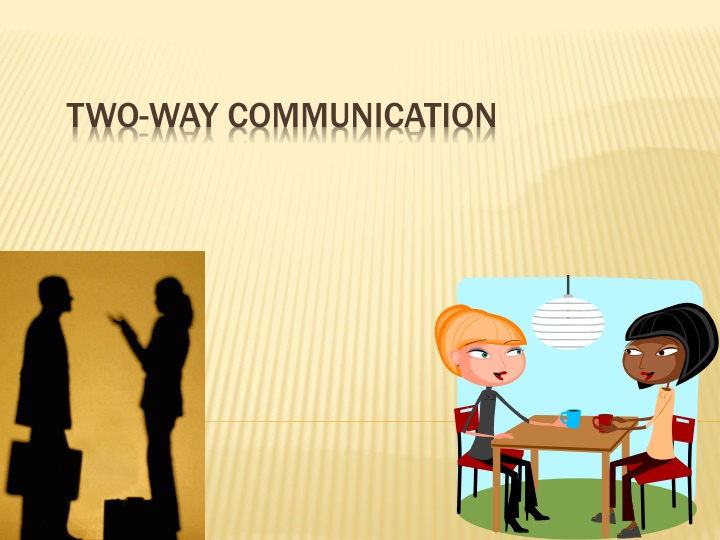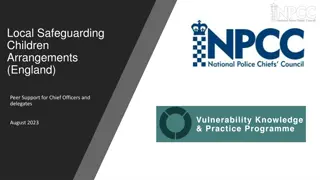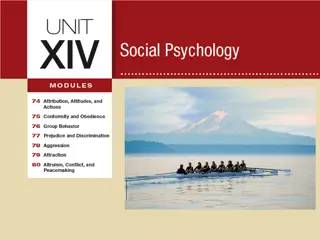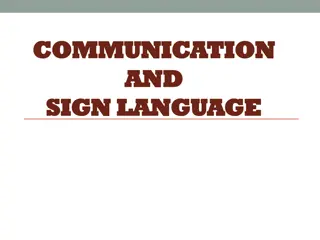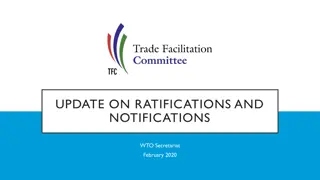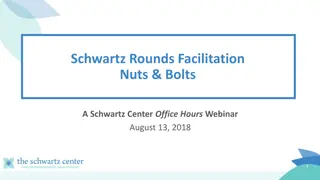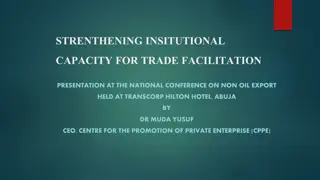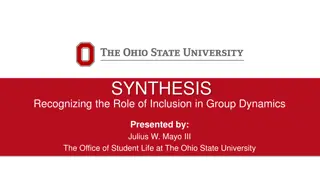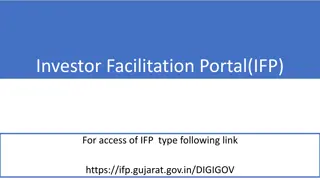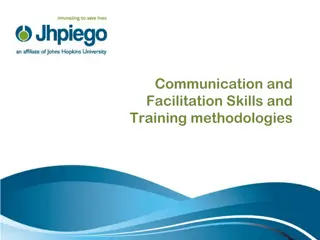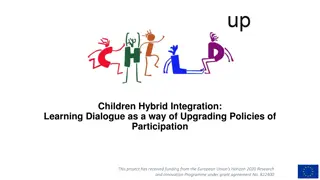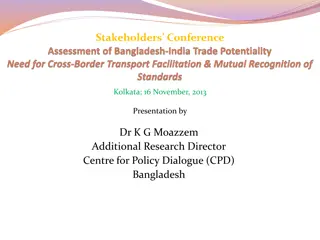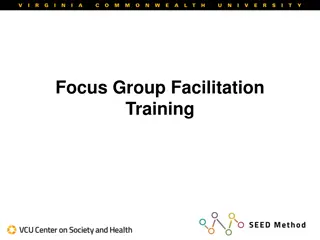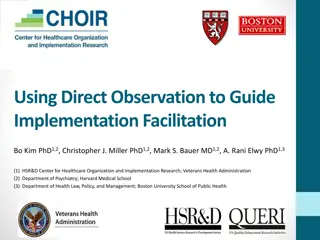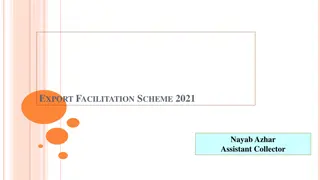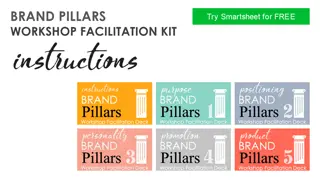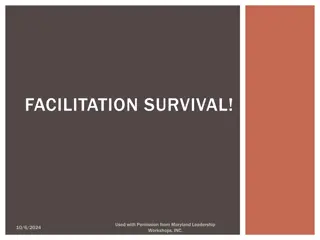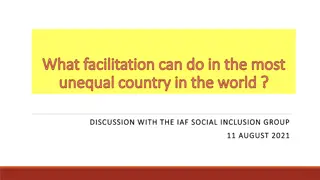Enhancing Group Communication and Facilitation Techniques
Effective two-way communication is essential for facilitating group activities, negotiating, resolving conflicts, and engaging in online communications. Understanding group behaviors such as task-centered, people-centered, and self-centered can help in effectively managing meetings and group interactions. Facilitation plays a key role in generating ideas, organizing solutions, and action planning within a group setting. Through practical scenarios like improving a greenspace, the importance of facilitation in community projects becomes evident.
Download Presentation

Please find below an Image/Link to download the presentation.
The content on the website is provided AS IS for your information and personal use only. It may not be sold, licensed, or shared on other websites without obtaining consent from the author.If you encounter any issues during the download, it is possible that the publisher has removed the file from their server.
You are allowed to download the files provided on this website for personal or commercial use, subject to the condition that they are used lawfully. All files are the property of their respective owners.
The content on the website is provided AS IS for your information and personal use only. It may not be sold, licensed, or shared on other websites without obtaining consent from the author.
E N D
Presentation Transcript
TWO-WAY COMMUNICATION You may need to Facilitate group activities & find out your group s opinions Negotiate And if that fails, Resolve conflicts And finally Online communications We will look at these in turn
GROUP BEHAVIOURS In meetings or when working with groups, people may exhibit the following behaviours. Task Centred Task Centred asks for ideas clarifies things summarises checks agreement keeps things on target
People Centred People Centred involves people checks feelings breaks tension handles disagreement ensures people join in
Self Centred Self Centred draws attention to themselves dominates to boost own ego concerned for self, not team or task withdraws if don t get their way
WHICH DO YOU THINK YOU ARE? Do you think you are task centred or people centred? At some point, have a look at the Questionnaire on meeting and group behaviours in the manual
FACILITATION Facilitation is a means of helping groups generate ideas and problem solve. The facilitator should ideally be independent and not influence the discussions in anyway apart from helping to keep them on track. For sensitive issues, you may need to use an independent facilitator rather than someone in your team
FACILITATION It can be grouped into a series of events generating ideas organising and categorising them voting and prioritising generating solutions action planning And evaluation
FACILITATION Imagine you are part of a community group who want to improve a derelict greenspace near you. It has been cleared of rubbish, and the soil is ok for planting. But, what are you going to do with it, and how are you going to maintain it?
FACILITATION SUMMARY By using techniques like the ones we ve done, you should be able to help groups come to a decision Facilitation can also help with prioritising, action planning and generating solutions Ideally the facilitator should not influence the groups thinking. They can point things out, but should be balanced.
NEGOTIATION SKILLS Negotiation is a dialogue between two or more people or parties It is intended to:- reach an understanding, resolve point of difference, gain advantage in outcome of dialogue, produce an agreement upon courses of action, bargain for individual or collective advantage, craft outcomes to satisfy various interests of two or more people/parties involved in a negotiation (Wikipedia)
NEGOTIATION IS NOT Coercion: meet my demands, or else Arbitration: who has the fairest proposal? Persuasion: our services are good value Giving in: ok, I ll cut prices by 20%
OUTCOMES OF NEGOTIATION Win/Win Win/Lose Parties aim to agree Collaboration & Compromise Acceptable outcome more likely Parties are in conflict Need to "beat the opposition" Tactics negative Confrontation
? ? http://images.google.co.uk/images?q=tbn:yhtr0yWeNzEJ:http://cf.douglasesd.k12.or.us/images/DCECPC/StickPeople.jpg
HOW DO YOU NEGOTIATE? Information Goals Trades Alternatives Relationships Expected outcomes Consequences Power Possible Solutions
NEGOTIATION/FACILITATION EXERCISE Each group must complete a task. You can use your own resources and can also negotiate to borrow or exchange resources with other groups. Tasks Tasks one of the following: one of the following: Make a model of a TV with an antenna. You can use any material as long as the model resembles a TV. Make a paper chain. Each chain must have a different colour to its adjacent chain. Make a cube. Each side must have a different colour in relation with the sides adjacent to it. Make a bridge with two bases one meter apart. You will have 25 minutes to finish your task Once you declare that your group has finished, you can no longer participate on the tasks or share their current resources. The aim is for the group to complete their task successfully.
REVIEW Were you successful? If not, why not? What works and what doesn t? Refer to Meeting & Group Behaviours in the Manual. Did you observe any? What about back at work? You need to be aware of how you behave in a group, and how others do. What are your Top Tips for Negotiating?
